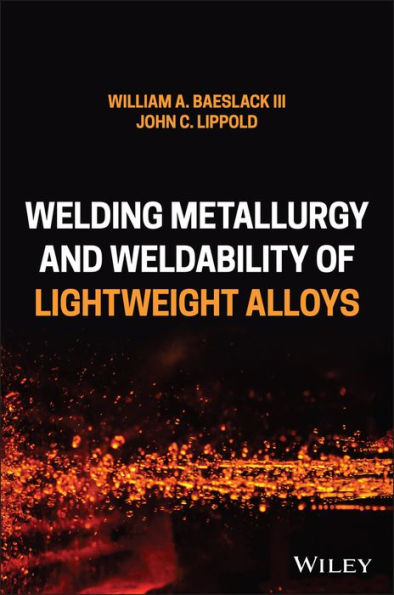The use of lightweight alloys commonly appears in numerous industries, including aerospace, defense, automotive, energy, electronics, and healthcare. The increasing and broader utilization of these high-performance materials and the need to effectively join these alloys is of utmost importance to these industries in order to enhance product functionality and operational efficiency, limit failures, and perhaps decrease cost.
Welding Metallurgy and Weldability of Lightweight Alloys is an essential resource for those seeking a strong fundamental and applied knowledge of this important skill—from weldability principles to the practical selection of materials, and from welding processes to process parameters, as well as post-weld processing to optimize weld properties and performance. The book also provides an in-depth discussion of the influence of alloy chemical composition, welding process, and associated thermal cycles on weld solidification, solid-state phase transformation, microstructure evolution, and mechanical properties. Finally, the authors delve into the origin and prevention of weld defects, such as porosity, and how to conduct a proper failure analysis of the welded lightweight alloy structures.
Welding Metallurgy and Weldability readers will also find:
- Description of applications of welding metallurgy principles using practical problem-solving
- Case studies that illustrate the lessons described in the book
- Coverage of the welding and joining of composites and intermetallics according to the aluminum, titanium, and magnesium alloy systems
- Exploration of tests for weld solidification cracking, HAS liquidation cracking, and solid-state cracking
- A large number of photos, graphical presentations, and data to support and enhance discussion
Welding Metallurgy and Weldability is a useful textbook for upper-level undergraduate and graduate students, and a helpful reference for engineers, scientists, and technicians.
The use of lightweight alloys commonly appears in numerous industries, including aerospace, defense, automotive, energy, electronics, and healthcare. The increasing and broader utilization of these high-performance materials and the need to effectively join these alloys is of utmost importance to these industries in order to enhance product functionality and operational efficiency, limit failures, and perhaps decrease cost.
Welding Metallurgy and Weldability of Lightweight Alloys is an essential resource for those seeking a strong fundamental and applied knowledge of this important skill—from weldability principles to the practical selection of materials, and from welding processes to process parameters, as well as post-weld processing to optimize weld properties and performance. The book also provides an in-depth discussion of the influence of alloy chemical composition, welding process, and associated thermal cycles on weld solidification, solid-state phase transformation, microstructure evolution, and mechanical properties. Finally, the authors delve into the origin and prevention of weld defects, such as porosity, and how to conduct a proper failure analysis of the welded lightweight alloy structures.
Welding Metallurgy and Weldability readers will also find:
- Description of applications of welding metallurgy principles using practical problem-solving
- Case studies that illustrate the lessons described in the book
- Coverage of the welding and joining of composites and intermetallics according to the aluminum, titanium, and magnesium alloy systems
- Exploration of tests for weld solidification cracking, HAS liquidation cracking, and solid-state cracking
- A large number of photos, graphical presentations, and data to support and enhance discussion
Welding Metallurgy and Weldability is a useful textbook for upper-level undergraduate and graduate students, and a helpful reference for engineers, scientists, and technicians.

Welding Metallurgy and Weldability of Lightweight Alloys
300
Welding Metallurgy and Weldability of Lightweight Alloys
300Hardcover

Product Details
| ISBN-13: | 9781119575009 |
|---|---|
| Publisher: | Wiley |
| Publication date: | 05/12/2026 |
| Pages: | 300 |
| Product dimensions: | 0.00(w) x 0.00(h) x 0.00(d) |
